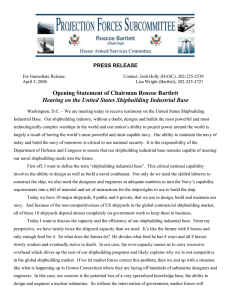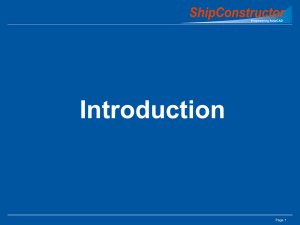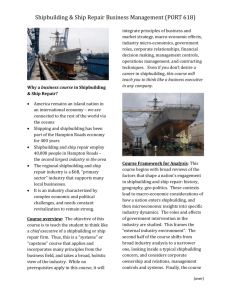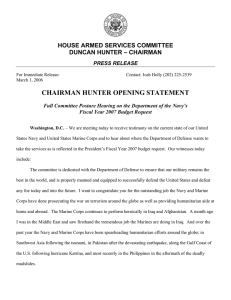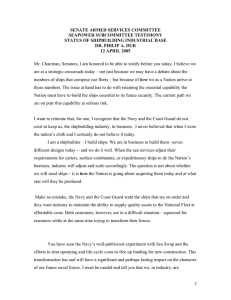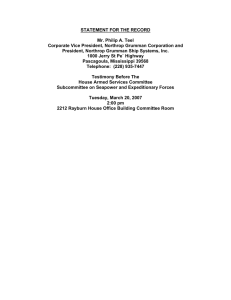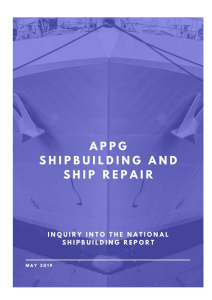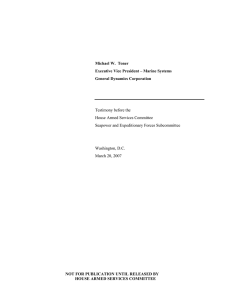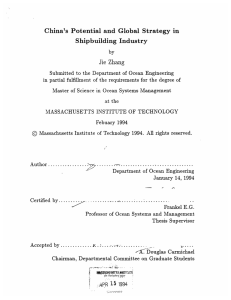STATEMENT OF HONORABLE DONALD C. WINTER SECRETARY OF THE NAVY
advertisement
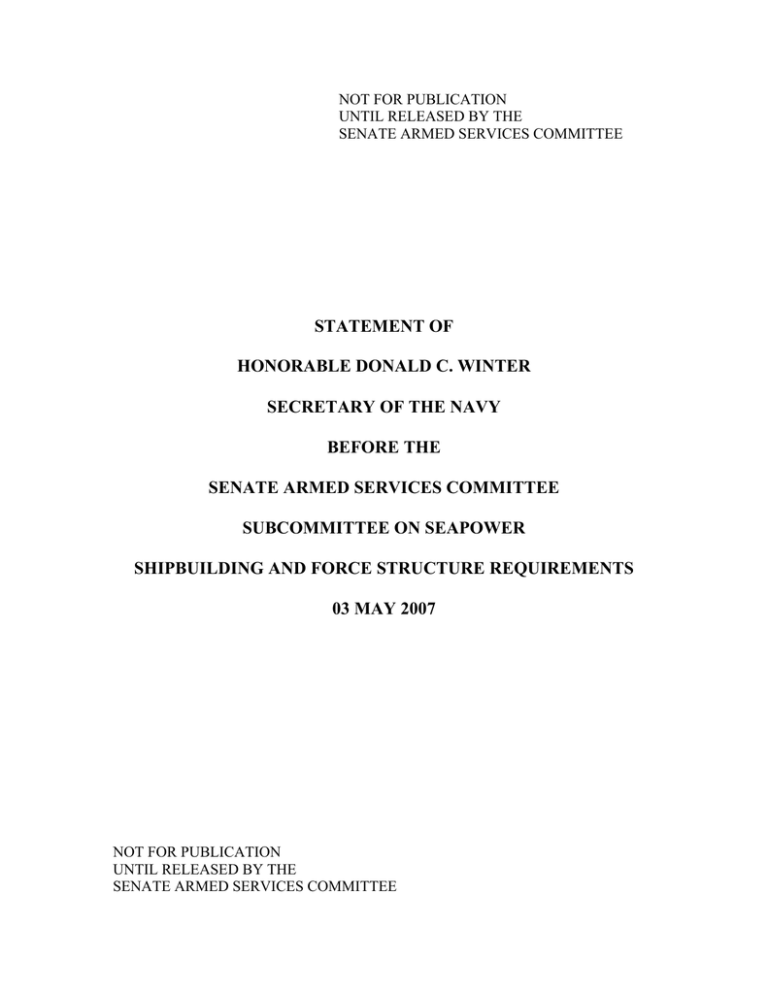
NOT FOR PUBLICATION UNTIL RELEASED BY THE SENATE ARMED SERVICES COMMITTEE STATEMENT OF HONORABLE DONALD C. WINTER SECRETARY OF THE NAVY BEFORE THE SENATE ARMED SERVICES COMMITTEE SUBCOMMITTEE ON SEAPOWER SHIPBUILDING AND FORCE STRUCTURE REQUIREMENTS 03 MAY 2007 NOT FOR PUBLICATION UNTIL RELEASED BY THE SENATE ARMED SERVICES COMMITTEE Thank you for inviting me to appear before the Senate Armed Services Committee Subcommittee on Sea Power. The support that this committee provides to the Navy and Marine Corps is greatly appreciated. A strong Navy is key to maritime dominance and is a critical aspect of our National Defense Strategy. We need a force structure of 313 ships. The process of acquiring new ships is challenging and the budget is tightly wound. Many of our past problems have resulted from constantly changing requirements and shipbuilding plans. If the Department of the Navy is to succeed in acquiring and maintaining the required numbers of ships, we need a plan, we need to stick to it, and we need to closely manage the execution of the plan. The 313 ship plan that was promulgated over the past two years is our goal. The force produced by this plan will satisfy our requirements for blue, green, and brown water capabilities. The biggest challenge we face is acquisition of new ships. We cannot build the quantities or qualities of ships that are required unless we correct several shortfalls. I have initiated a review of our major shipbuilding programs while simultaneously working to institutionalize key acquisition reform initiatives. The recent challenges associated with the Littoral Combat Ship (LCS) and other shipbuilding programs point to a number of issues that we are addressing. In the long-term, I am initiating the following actions: o Re-assert Navy control over the entire shipbuilding acquisition process. Control over acquisitions also means decoupling decision points. o Establish the Navy as the lead systems integrator to optimize the overall capability of the Fleet. o Use the shipbuilding contract process to incentivize contractors to design for production and sustainment. o Use independent cost estimates for the trade-offs and decisions thus increasing reliability of the cost estimation process. o Assure that detail design and construction contracts are supported by mature specifications. o Develop an acquisition work force capable of providing knowledgeable program oversight. I am working to develop solutions that are in the best overall interest of the taxpayer, the Navy, and the industry that supports shipbuilding. 2 In reviewing specific programs, my focus thus far has been on LCS, LPD-17, T-AKE, and Virginia Class submarines. In past discussions, I have noted our efforts to bring the production cost of Virginia Class Submarines down to $2 Billion in FY2005 dollars. We are making considerable progress in this area and must achieve that goal by 2012, when we shift to two units per year. The early experience with the Littoral Combat Ship has been disappointing and must be corrected to assure that we construct these vitally needed ships in a timely and cost effective manner. As you know, I am restructuring the program to address cost and programmatic issues. This restructuring will result in the cancellation of one of the FY06 ships and will require the funding allocated for the FY07 ships to be used to offset cost and schedule issues associated with the FY05 and other two FY06 ships. I am redoubling efforts to manage for the success of the lead ship efforts. My proposal is to reduce buys for FY08 and FY09 from what was previously planned and position the program to down-select to a single design in FY10. It is critical that the Department take this action early to assure this vital program is technically sound and affordable. With respect to DDG-1000, CVN-78, MPF(F), and LHA(R), I plan to conduct detailed reviews of each of these programs to address potential issues early in these programs. Each of these programs must be properly initiated and closely monitored to assure success. To make our shipbuilding plan work, there are several areas where I need your help. I will need your support for the LCS restructuring plan I have noted previously. I will need your patience as we transform mine warfare shipboard capabilities to a LCS-centric structure. It is imperative that we move to this more capable force and retire less capable assets. A second area where we require your support is in modifying language regarding the number of aircraft carriers required. As we have noted, there will be a short period of time between the period when USS Enterprise (CVN 65) is retired and the Gerald Ford enters service when it will be necessary to reduce our carrier force from eleven to ten units. We will be able to meet operational requirements during this period with limited risk by carefully scheduling maintenance activities. A third challenge we are working through is getting amphibious lift right. I applaud Congress and this committee in particular for its increasing interest in shipbuilding. I acknowledge the desire of many Members to increase force structure at a faster rate than the Department can afford to execute. My biggest concerns regarding changes to our annual shipbuilding plan relate to the budget and to the shipbuilding industrial base. Any additions to the shipbuilding budget that have unfunded out year liabilities will disrupt our delicate plan to achieve the desired long-term force structure. With respect to the shipbuilding industrial base, hurricane Katrina has complicated the ability of the industrial base to surge thus reducing flexibility to execute increased procurement rates. I am exploring opportunities to work with our industrial partners to restore our shipbuilding industrial base flexibility. 3 In summary, your Navy is leaning forward and building the ships and submarines our country needs for the future. Over the past years we have executed a major shipbuilding research and development program that has set the stage for a major transformation in the Navy’s force structure. We are in the early stages of development and production of more classes of new ships than we have produced in recent times. This will result in a transformation of the fleet and position it to deal with a very uncertain future. But, as you have seen, such a grand transformation will not be without problems. You have my promise to actively manage these programs and I request your support in helping me to get our Navy’s shipbuilding program in position to deliver the fleet it needs. 4


